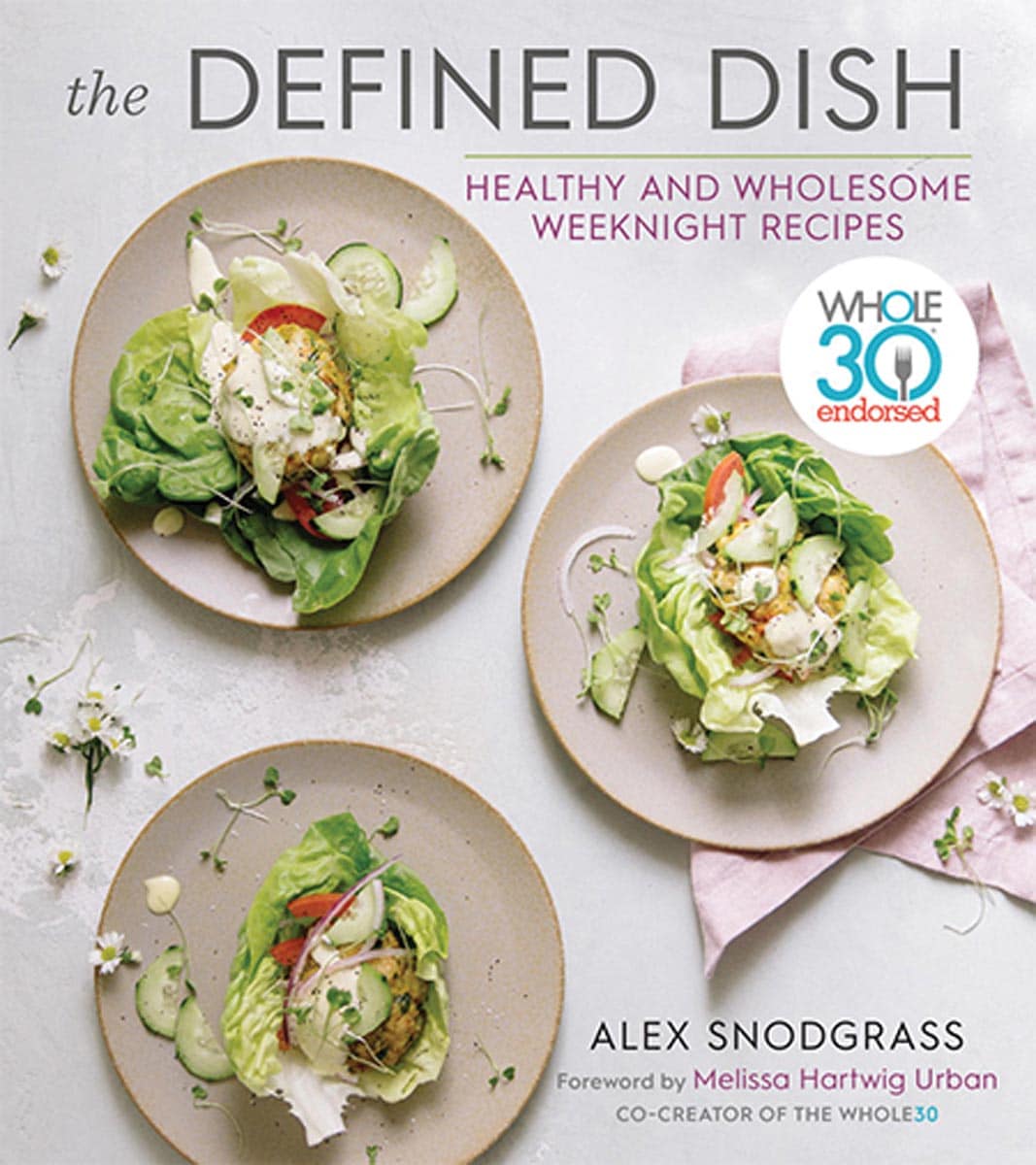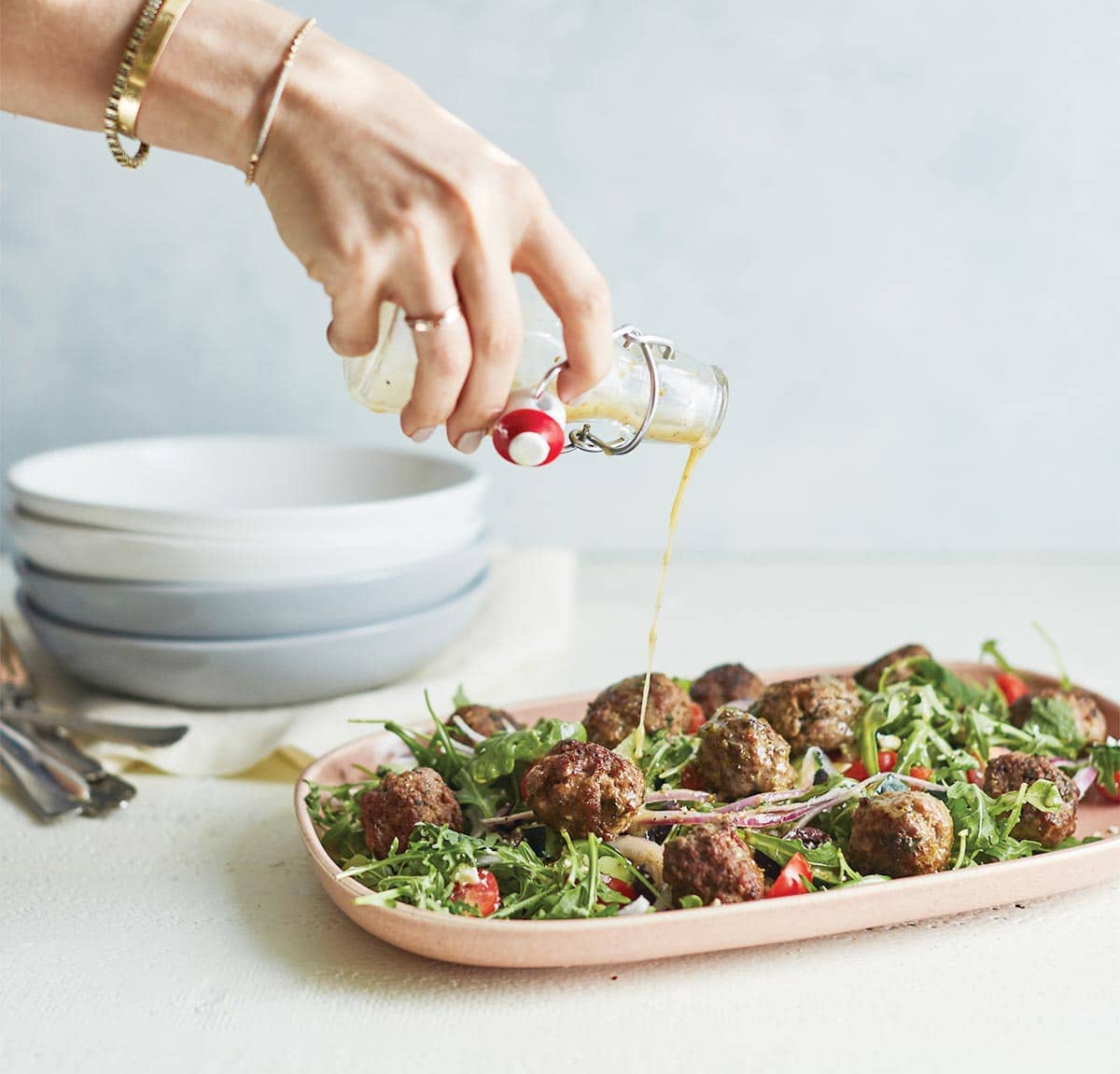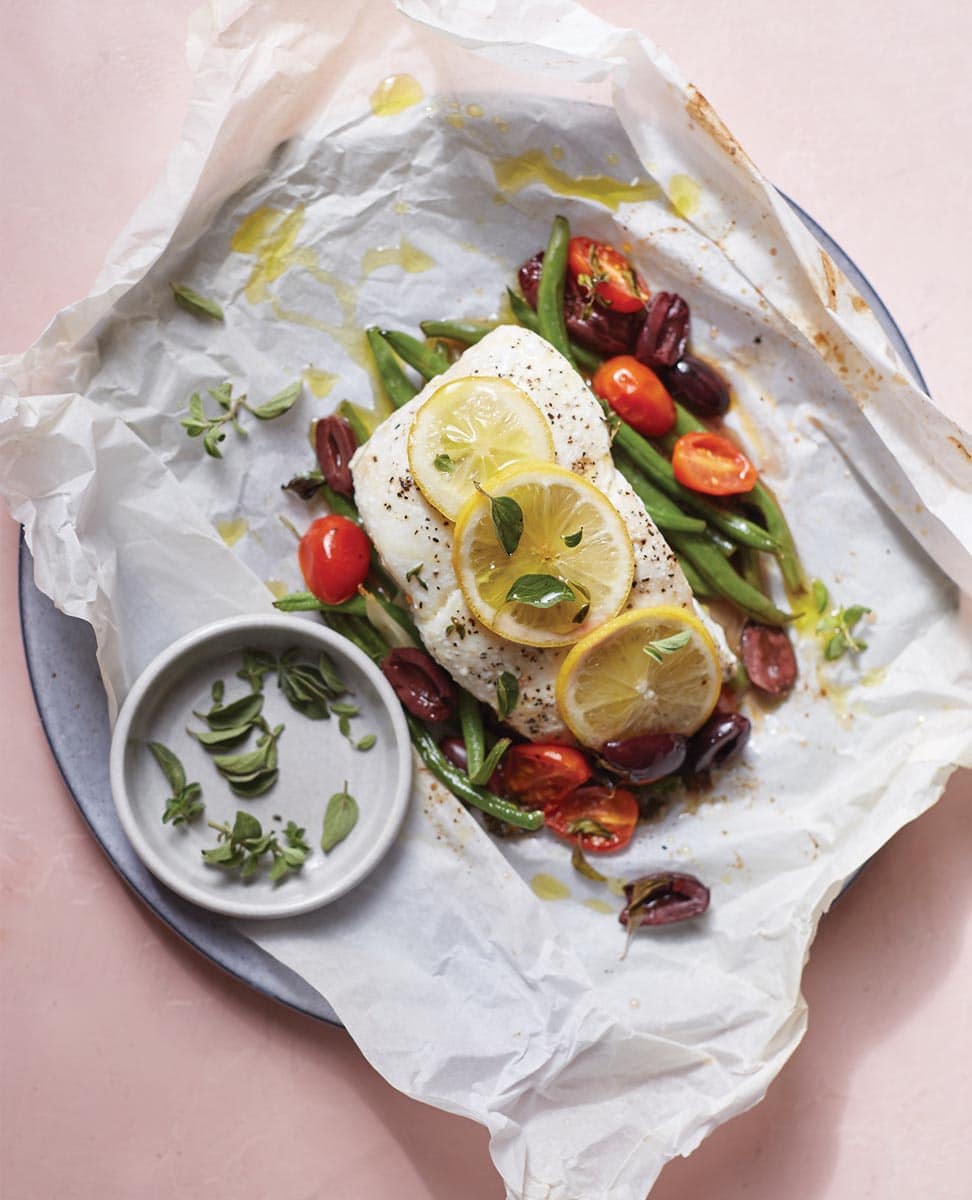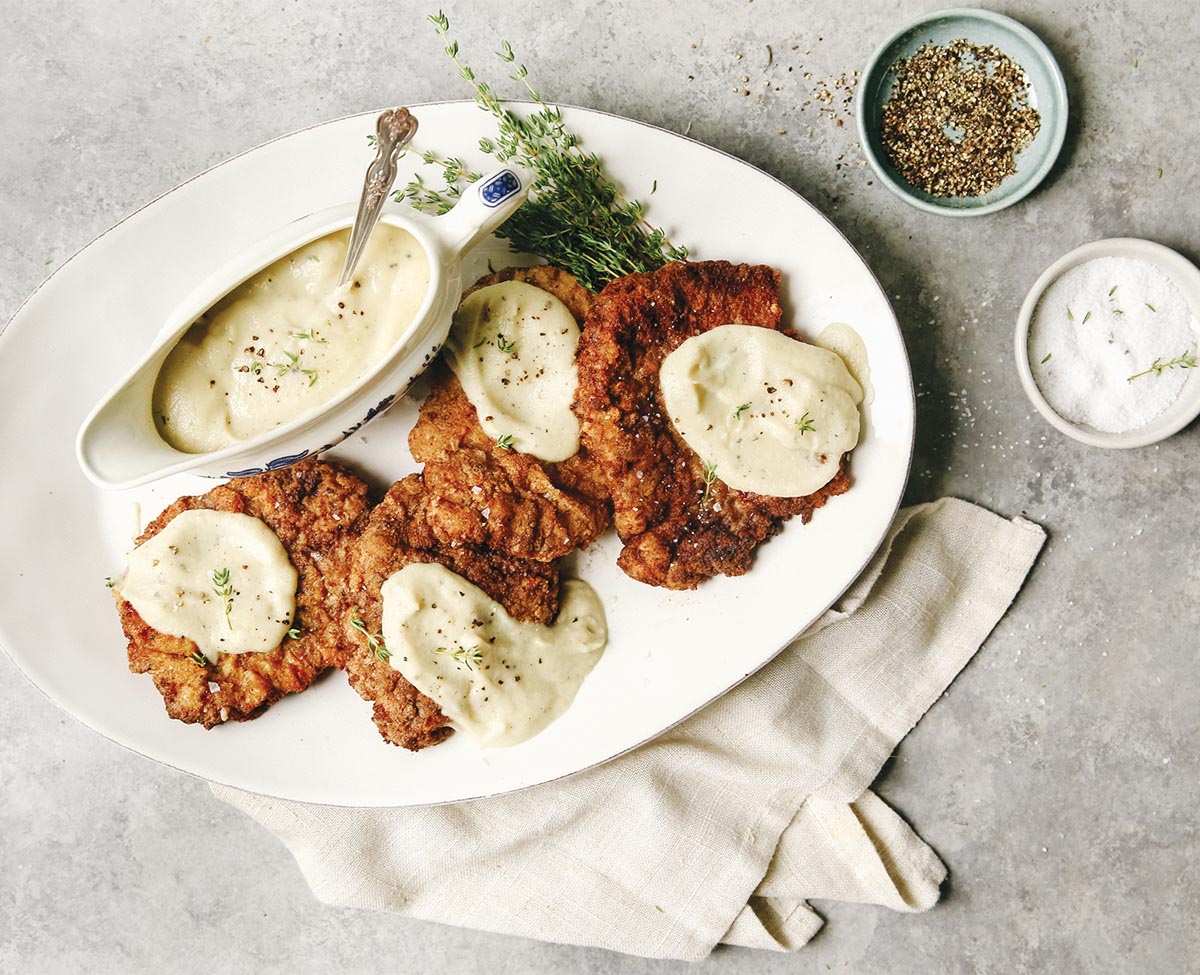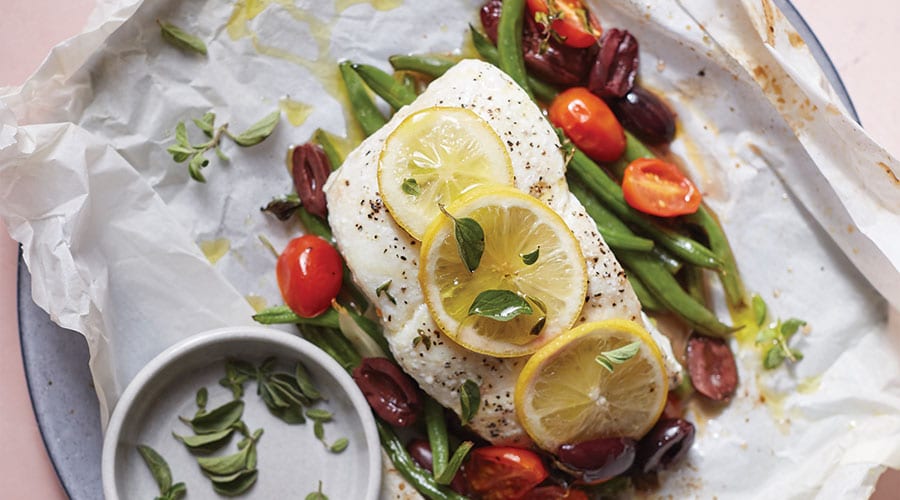
Defining Moments
By June Naylor
Photos by Kristen Kilpatrick
At TCU, Alex Snodgrass preferred making her mom’s meatballs to eating out. Her love of food led to an award-winning blog and a bestselling cookbook.
Before she ever dreamed of writing a cookbook (much less one that would land on The New York Times bestseller list), Alex Snodgrass — née Glendenning — was a TCU student cooking for her roommates and friends. Her early devotion to making good food and the joy of sharing with others would serve her well in a career that has taken on a life of its own.
A native of Celina, northeast of Denton, Snodgrass grew up eating Mom’s cooking, particularly meals that reflected her Italian heritage. Today, the Dallasite is a mom of two little girls and the wife of a land investor-developer. And she has made a career out of her love of cooking. Almost as soon as she launched The Defined Dish blog in 2017, she found herself with a loyal following. Two years later, The Defined Dish: Healthy and Wholesome Weeknight Recipes was published, and Snodgrass was racing coast to coast on a publicity tour with sold-out engagements in most cities.
It’s a journey that starts with her mother’s meatballs. “Growing up in the country, we didn’t eat out a lot,” says Snodgrass. “I had my first apartment my sophomore year, and going out to eat wasn’t my norm — I got sick of it, fast. I called my mom and had her walk me through making her meatballs. Soon I was cooking for myself and friends all the time.”
She also met future husband Clayton Snodgrass, a Fort Worth native, at TCU. After graduation, the two moved to Austin, where they worked in the political realm for three years before choosing Dallas as the place to raise a family. There, the young mother dabbled in real estate but found herself unfulfilled.
“I was home with my first baby and didn’t know what was next. For the first time in my life, I struggled with anxiety,” she says, recalling a conversation about healthy eating with her sister, a personal trainer. “My sister had done Whole30 and recommended it for mental clarity.” (Whole30 is a popular 30-day plan that eliminates sugars, alcohol, grains, legumes, dairy, wheat and processed foods in favor of eating “clean” — veggies, eggs, meat, seafood.) Snodgrass says the experience was a win-win: “Besides feeling better — the anxiety and brain fog were gone, having taken all the sugar and gluten out of my diet — I found I had a talent for making things taste good while sticking to the rules.”
Hungering for gumbo but not able to make a typical roux, she used her creativity to stay inside the boundaries while achieving the flavors and textures she wanted. In this case, she found arrowroot starch to be a good flour substitute.
“I had that ‘aha!’ moment. I found joy in this cooking, and I realized I could make it my career.” But she also had to navigate a learning curve when it came to branding herself. “Just because the recipes were good didn’t necessarily mean the food looked good. I couldn’t afford a photographer and had to figure out the photos on my own, so I studied YouTube videos on how to take pictures of food.”
In less than two years she had an engaged audience of blog and social media followers, as well as sponsors, and The Defined Dish was a full-time job. In 2018, her blog was a Saveur readers’ choice winner for “Most Inspired Weeknight Dinners.” A literary agent approached her. “She’d seen me on Instagram, knew I had a loyal community, and the stars aligned.”
Writing a book proved more difficult than blogging. A quick learner, she adapted to the writing structure; The Defined Dish was released last December (find links on thedefineddish.com). Melissa Urban, the Whole30 co-founder, wrote the foreword; Kristen Kilpatrick, another Fort Worth native and schoolmate, took the photos.
“Even though blogging is a more practical way of sharing, there’s something special about having a cookbook,” Snodgrass says. “I’m a cookbook collector myself, and I want people who love cookbooks to be able to have it right there on the kitchen counter.”
Both cookbook and blog offer Whole30-compliant dishes, along with paleo, gluten-free and dairy-free recipes. There also are family-friendly items, such as shredded chicken tacos, burgers with brioche buns, chicken-fried steak with creamy cauliflower gravy, King Ranch casserole, chili and stir-fry dishes. Taking cheat days from the program is essential, however.
“I keep it clean in my own kitchen, but it’s wrong to think you can’t eat what you want sometimes. We get Tex-Mex and margaritas on the weekends — I love food too much not to enjoy those things. In the first chapter of my book, I emphasize the message of ‘nourish, not punish.’ “
Snodgrass is now contemplating summer vacation with Clayton and the girls. The six week book tour stretched to three months, meaning downtime in their newly remodeled Preston Hollow home became even more precious. Another book is in the works; this time she’ll be better prepared for the promotion process.
“I want to do it all again, but I want to be sure I do it right, and I don’t want to take so much time away from family,” she says. “But, you know, I’ve learned a lot.”
Mediterranean Fish en Papillôte
Serves 2
- 5 ounces haricots verts
- 1 clove garlic, very thinly sliced
- 2 fillets petrale sole (or white flaky fish, like halibut, cod or tilapia)
- 2 tablespoons extra-virgin olive oil
- ½ teaspoon kosher salt
- ¼ teaspoon freshly ground black pepper
- ½ lemon sliced into ¼-inch-thick rounds
- ½ cup cherry tomatoes, halved
- ¼ cup Kalamata olives, halved
- 1 tablespoon fresh oregano leaves
Heat oven to 400 degrees and place two 9-by-11-inch pieces of parchment paper on a flat surface.
Evenly divide haricots verts and sliced garlic and place half in the center of each paper sheet. Place a fillet on top of each portion of haricots verts, and drizzle each fish portion with 1 tablespoon oil. Season with salt and pepper, and evenly distribute lemon, tomatoes, olives and oregano over fillets.
Fold down short ends of parchment over each fish, making a rectangle. Grab the open ends and roll toward the fish so no liquids can escape, creating two enclosed packages.
Place the parcels in 9-by-13-inch baking dish and cook until fish flakes easily, about 15 minutes.


